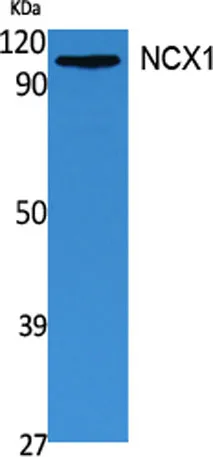NCX1 rabbit pAb - 50 μL
In cardiac myocytes, Ca (2+) concentrations alternate between high levels during contraction and low levels during relaxation. The increase in Ca (2+) concentration during contraction is primarily due to release of Ca (2+) from intracellular stores. However, some Ca (2+) also enters the cell through the sarcolemma (plasma membrane). During relaxation, Ca (2+) is sequestered within the intracellular stores. To prevent overloading of intracellular stores, the Ca (2+) that entered across the sarcolemma must be extruded from the cell. The Na (+)-Ca (2+) exchanger is the primary mechanism by which the Ca (2+) is extruded from the cell during relaxation. In the heart, the exchanger may play a key role in digitalis action. The exchanger is the dominant mechanism in returning the cardiac myocyte to its resting state following excitation. [supplied by OMIM, Apr 2004],
Distributed by Gentaur

View the Technical Datasheet of the product below

View the Technical Datasheet of the product below
